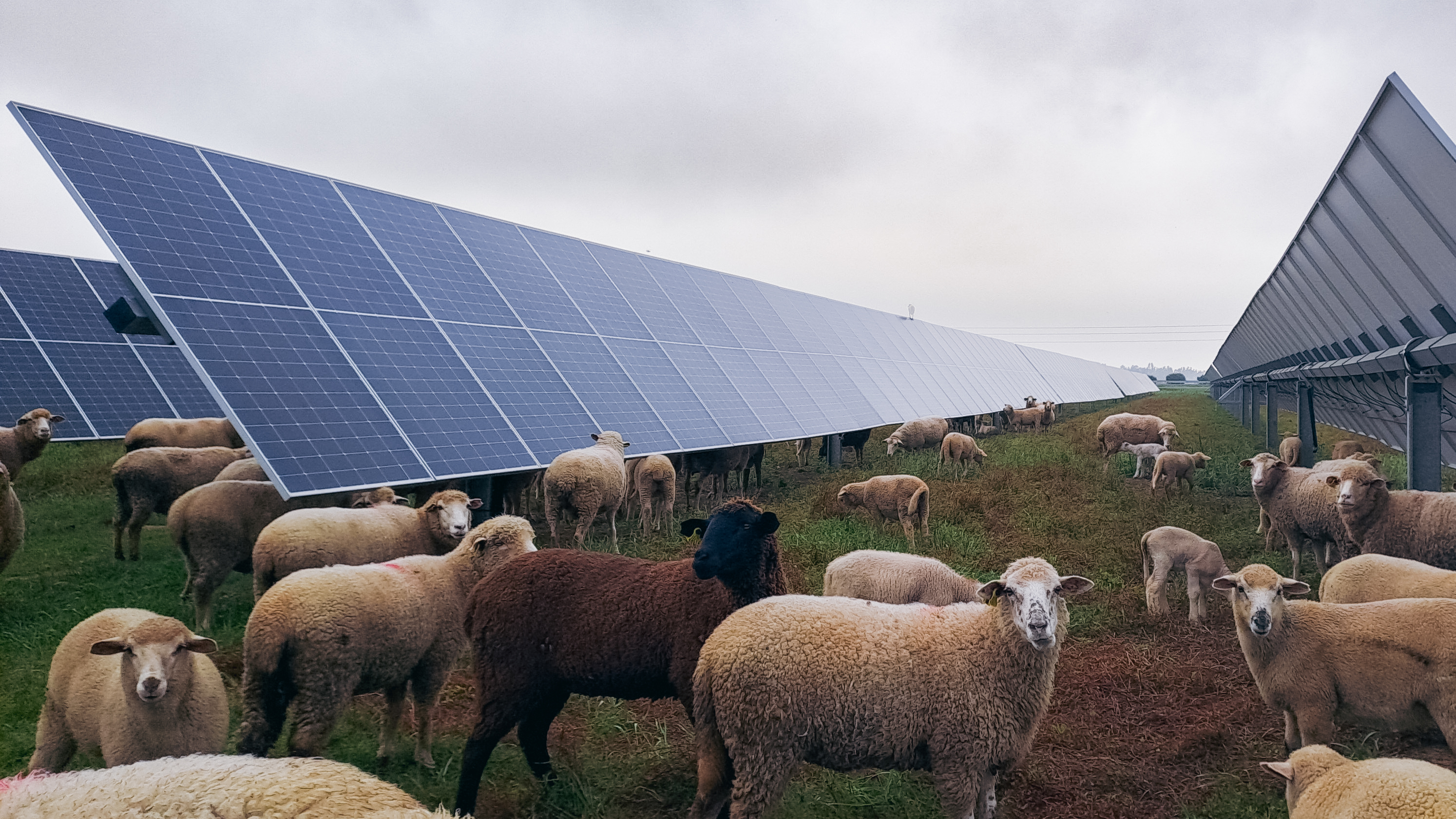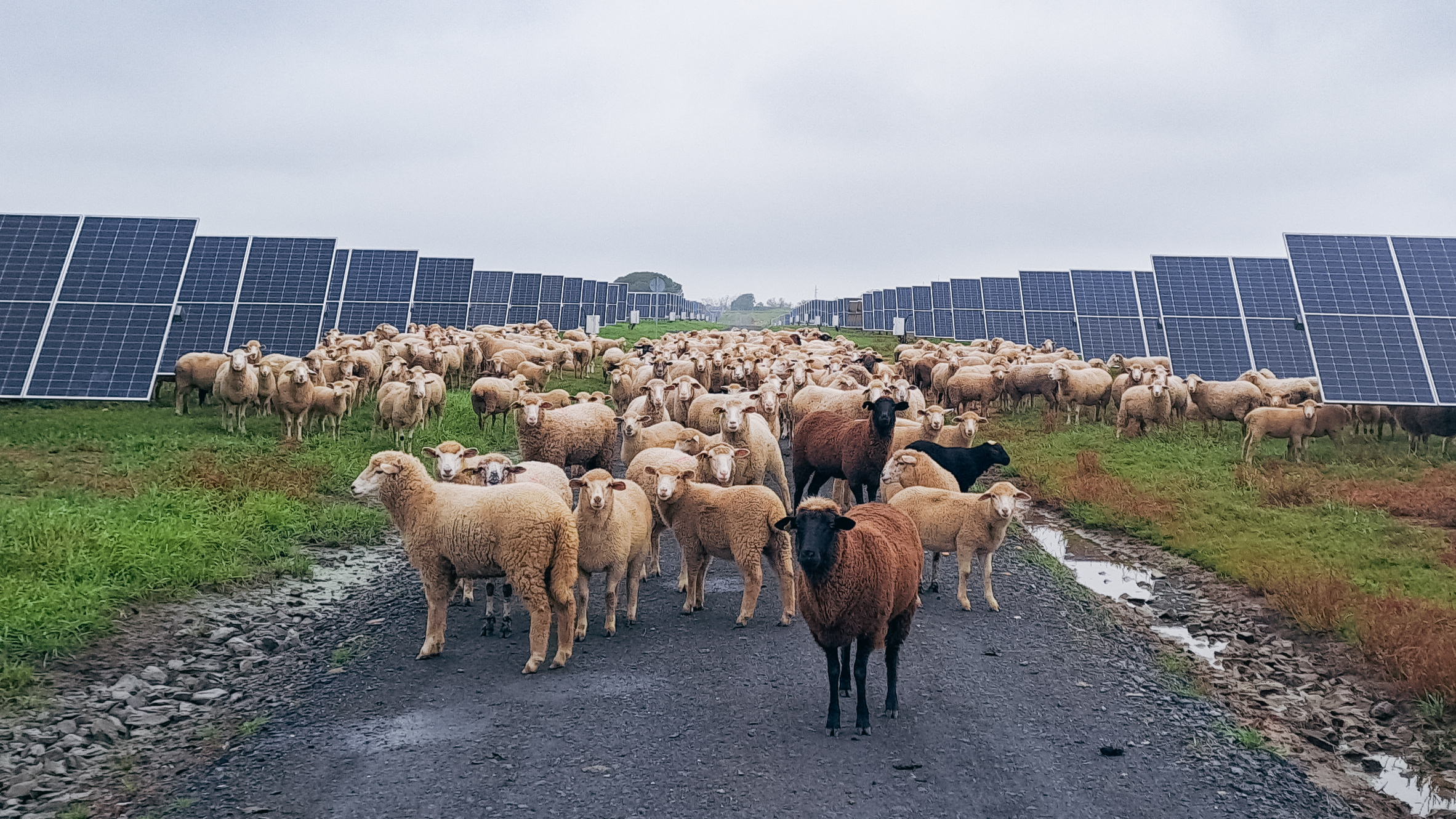12.06.2024
Land use can be enhanced through cooperation between sheep farming and solar power production, with the collaboration benefitting both. The solar panels provide shade for the grazing sheep, while the sheep help maintain the solar plant.
Since February 2024 the Niebla solar plant in Spain has welcomed some new residents, with around 500 sheep now grazing among the solar panels.
This renewable energy production involves collaboration with a local sheep farm, making the maintenance of the solar park more manageable while having positive impacts extend to the environment as well.
The solar panels provide shade for the sheep
The Niebla solar plant is located in San Juan del Puerto in Andalusia, Spain, where temperatures can rise well above 30 degrees Celsius as early as spring. With over 92,000 solar panels in the park, the sheep find shelter from the blazing sun in their shadows.
The sheep roam freely within a fenced area, where they also have their own designated area for overnight stays. The aim is that the sheep can graze within the solar park for most of the year.
According to Laura Tiainen, Senior ESG Specialist at Taaleri Energia, cooperation between renewable energy production and sheep farming can also reduce land use, thereby impacting positively on the environment when done correctly. It would require more land use if the sheep were to graze in their own area while the solar farm operated in another area.
“We can minimise the adverse impacts of land use when the solar park and the sheep share the same area.”
The collaboration between sheep farm and solar panels offers benefits for both agriculture and energy production, especially in challenging climate conditions such as those in Andalusia, which has suffered and continues to suffer from droughts caused by climate change. When the sheep graze in solar farm areas, they also promote soil health with their natural fertiliser. This fertiliser enriches the soil with organic matter, microbes, and other biotic species that are vital for the soil's vitality.
Healthy soil reduces the risk of erosion, which in turn can decrease the amount of dust from dry soil, thereby lowering the cleaning costs for the solar panels. The soil remains healthier and the area around the solar panels stays well-maintained, making it a sustainable solution to the one of the challenges faced by the energy and agricultural sectors.
”We can minimise the adverse impacts of land use when the solar park and the sheep share the same area."

Maintenance of the solar park eases
The Niebla solar plant is part of Taaleri SolarWind II Fund, an infrastructure fund investing in ready-to-build, utility-scale wind and solar assets.
This is Taaleri Energia’s second operational solar plant, and currently Taaleri Energia has over 30 solar PV and hybrid (onshore wind + solar PV) development projects in Finland, Greece, Lithuania, Poland, Serbia, Spain and Sweden.
Taaleri Energia develops and invests in utility scale wind, solar and battery storage plants. The Taaleri Energia team is involved in developing renewable energy projects right from their inception. Project development encompasses tasks such as conducting environmental and social impact assessments, managing permit processes, and coworking and negotiating with landowners.
Grazing sheep in solar plants is not yet particularly common, even though sheep facilitate the maintenance of the solar plant. Without sheep, lawnmowers would need to operate frequently in the area, resulting in additional costs. The idea of sheep grazing came from a local partner of Taaleri Energia, who initiated the collaboration with the sheep farm.

Generating renewable energy for 27,000 households
The Niebla solar plant reached its operational phase last year (2023) and is now operating now at full capacity.
The 50-megawatt solar photovoltaic power plant is estimated to generate approximately 106 GWh of renewable electricity annually, which is enough to supply electricity to around 27,000 households. The renewable electricity produced annually is estimated to enable emission reductions of around 34,800 tonnes of CO2e.
Tiainen states that solar power has a significant role in the green transition and the reduction of emissions.
"With the green transition, we are moving towards an ecologically sustainable economy and growth that is not based on the overconsumption of natural resources and fossil fuels. At the core of this transition, and driving it forward, is renewable energy. The demand for energy and the need for energy self-sufficiency are constantly growing in the world. Our planet is facing its boundaries, so it is crucial that we expand the production of zero-emission energy inclusively."
The cost of large-scale wind and solar electricity generation has decreased by between 60 to 80% over the past 10 years and in most countries, it is now the cheapest form of new-build electricity generating capacity. By 2050, over 70% of the world's electricity will be generated from wind power and solar energy.